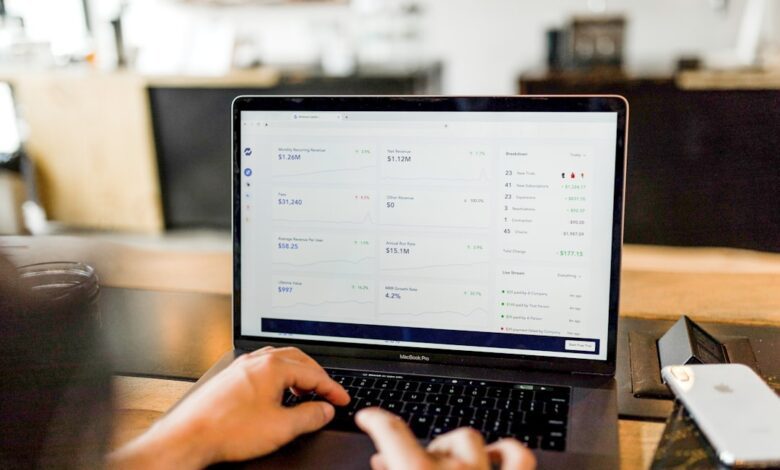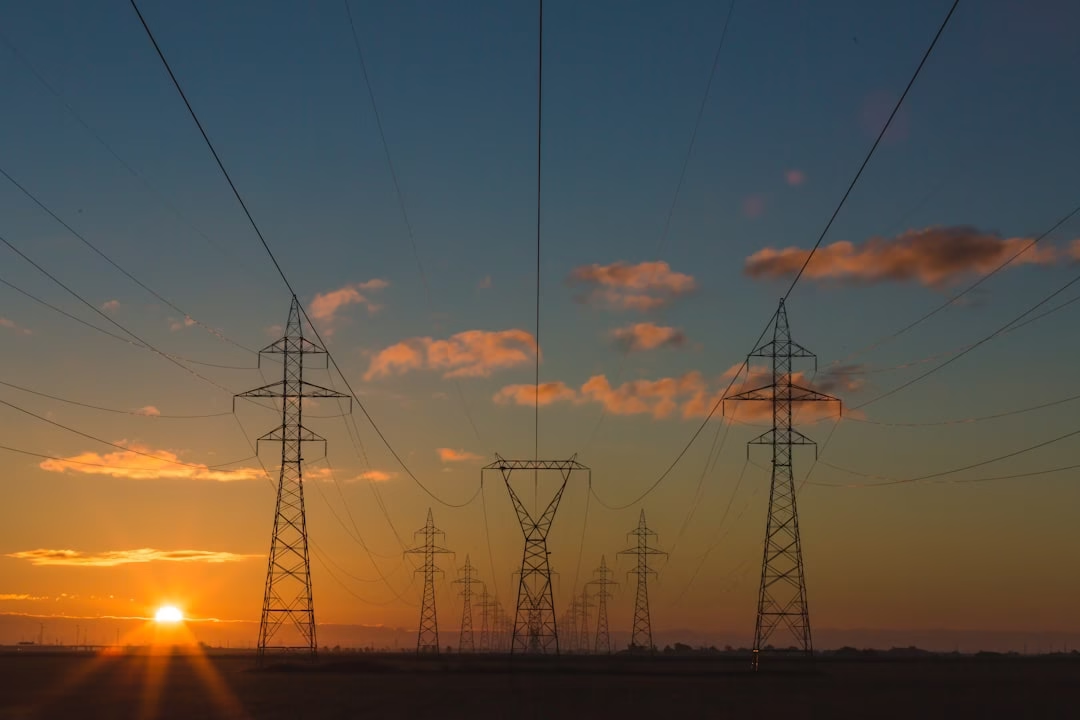Metals in Motion: Exploring the Dynamics of Industrial Demand and Investment Strategies

In an increasingly interconnected global economy, the role of metals extends far beyond mere commodities; they are integral to both industrial applications and investment strategies. This article explores the multifaceted nature of several key metals, beginning with silver, which serves as both a crucial industrial input and a coveted investment vehicle. As we delve into the nuances of copper prices, we will uncover how they act as a barometer for global economic health, revealing insights into broader market trends. Furthermore, the rise of green energy technologies is reshaping demand dynamics for rare earth metals, highlighting the pivotal role these materials play in the sustainable revolution. We will also compare platinum and palladium to determine which metal presents a more attractive investment opportunity, while examining how inflationary pressures impact the pricing of both precious and industrial metals. Lastly, we'll consider the future of aluminum in a sustainable economy and discuss the implications of mining regulations on metal prices. Join us as we navigate the complex landscape of metal markets and uncover the critical factors influencing their value and significance in today's world.
- 1. "Silver's Dual Identity: Navigating Its Industrial Applications and Investment Appeal"
- 2. "Copper Prices as Economic Barometers: Understanding Their Global Significance"
1. "Silver's Dual Identity: Navigating Its Industrial Applications and Investment Appeal"
Silver's unique properties grant it a dual identity that straddles both industrial applications and investment appeal. As an industrial metal, silver plays a crucial role in various sectors, including electronics, solar energy, and medical technologies. Its exceptional conductivity makes it invaluable in manufacturing components for smartphones, laptops, and other electronic devices. Additionally, silver is a key material in the production of photovoltaic cells, which convert sunlight into electricity, supporting the global shift towards renewable energy. The medical field also benefits from silver's antimicrobial properties, leading to its use in wound dressings and coatings for medical instruments.
On the investment side, silver is often viewed as a safe-haven asset, similar to gold. Investors flock to silver during periods of economic uncertainty or inflation, driven by its historical role as a store of value. Furthermore, silver's relatively lower price compared to gold makes it accessible to a broader range of investors. The metal is also increasingly recognized for its potential to hedge against currency fluctuations and economic downturns, enhancing its appeal in diversified investment portfolios.
However, the interplay between silver's industrial demand and its investment appeal creates a complex dynamic. Fluctuations in industrial demand can significantly influence silver prices, as seen during economic recoveries or downturns. For instance, increased adoption of green technologies can bolster demand for silver, while economic slowdowns may dampen industrial usage and, consequently, investment interest. This dual identity means that investors must navigate a landscape influenced by both market trends and macroeconomic factors, making silver a compelling yet multifaceted asset in today’s financial markets.
Silver plays a multifaceted role in both industrial and investment markets, making it a unique asset in the global economy. On the industrial side, silver is valued for its high electrical conductivity, thermal conductivity, and reflectivity, which makes it indispensable in electronics, renewable energy technologies, and medical applications. For instance, the increasing adoption of solar panels has significantly driven silver demand, as it is a key component in photovoltaic cells. Additionally, the growing use of silver in antibacterial coatings and medical devices highlights its importance beyond traditional applications.
In the investment market, silver is often considered a safe haven asset, much like gold. Investors turn to silver during times of economic uncertainty or inflation, as its value tends to hold up when other asset classes falter. This dual role as both an industrial commodity and a store of value creates a complex relationship between supply, demand, and price fluctuations.
Copper prices serve as a barometer for global economic health, reflecting industrial demand and construction activity. When economies are booming, the demand for copper rises, leading to higher prices. Conversely, during economic downturns, copper prices often decline, signaling reduced industrial activity. This correlation underscores the importance of copper as a leading economic indicator.
The emergence of green energy technologies has significantly impacted the demand for rare earth metals. As the world shifts towards renewable energy sources and electric vehicles, the need for rare earth elements—essential for batteries, magnets, and other high-tech applications—has surged. This increased demand can strain supply chains, leading to higher prices and potential geopolitical tensions, particularly as major producers of these metals are often concentrated in specific regions.
When comparing platinum and palladium, investors must consider various factors, including market demand, industrial applications, and price trends. While both metals are used primarily in catalytic converters for vehicles, palladium has seen a surge in demand due to stricter emissions regulations and the shift towards gasoline engines. Conversely, platinum, often seen as the more traditional investment, has struggled with oversupply issues. Investors must weigh the potential for price appreciation against the backdrop of changing automotive technologies and consumer preferences.
Metals play a crucial role in diversifying investment portfolios. Precious metals like gold and silver provide a hedge against inflation and currency fluctuations, while industrial metals can offer exposure to economic growth. A well-structured portfolio that includes a mix of these assets can help mitigate risk and enhance returns, particularly in volatile market conditions.
Inflation directly impacts the prices of both precious and industrial metals. As inflation rises, the purchasing power of currency declines, often leading investors to seek tangible assets like metals as a store of value. This increased demand can drive up prices, creating a feedback loop that further enhances the appeal of metals during inflationary periods.
Looking ahead, aluminum is poised to play a significant role in a sustainable economy. Its lightweight properties and recyclability make it an attractive choice for various industries, particularly in transportation and packaging. As companies seek to reduce their carbon footprints, the demand for aluminum is expected to grow, especially if production methods continue to become more energy-efficient and environmentally friendly.
Finally, mining regulations significantly influence metal prices. Stricter environmental regulations can increase production costs and limit supply, leading to price increases. Conversely, favorable regulations can encourage investment and expansion in mining operations, potentially stabilizing or lowering prices. Understanding the regulatory landscape is essential for investors and industry stakeholders alike, as it can have profound implications on the availability and pricing of critical metals.
2. "Copper Prices as Economic Barometers: Understanding Their Global Significance"
Copper prices serve as a critical economic barometer, reflecting the overall health of the global economy. Often referred to as "Dr. Copper," this metal is a key indicator due to its widespread use in various industries, including construction, electronics, and manufacturing. When copper prices rise, it typically signals increased demand for building materials and infrastructure projects, suggesting economic expansion and growth. Conversely, falling prices can indicate reduced industrial activity and a potential slowdown in economic growth.
Several factors contribute to the fluctuations in copper prices. Supply chain dynamics, geopolitical tensions, and changes in production levels from major producers like Chile and Peru can significantly impact availability and costs. Additionally, global economic trends such as urbanization, technological advancements, and shifts toward renewable energy sources can drive demand for copper. For instance, the increasing proliferation of electric vehicles and renewable energy systems, which rely heavily on copper for wiring and components, has contributed to price volatility and long-term demand forecasts.
Moreover, copper prices are influenced by macroeconomic indicators such as GDP growth rates, manufacturing output, and consumer confidence. Investors and analysts closely monitor these trends, using copper price movements as a predictive tool for future economic conditions. In this way, copper prices not only reflect current economic activity but also serve as a leading indicator of potential future trends, making them essential for policymakers, investors, and businesses alike.
In summary, understanding the dynamics of copper prices is crucial for grasping their role as a global economic indicator. As industries evolve and new technologies emerge, copper’s significance in the economy is likely to grow, further solidifying its status as a vital component in assessing global economic health.
In conclusion, the intricate landscape of metal markets reveals a complex interplay between industrial demand, investment potential, and broader economic trends. Silver, with its unique dual identity, serves as both a critical component in various industries and a sought-after asset for investors, highlighting the versatility and enduring appeal of this precious metal. As copper prices continue to act as a reliable economic barometer, they underscore the interconnectedness of commodity markets and global economic health.
Moreover, the rising demand for rare earth metals, driven by advancements in green energy technologies, signifies a shift towards sustainable practices that will shape future investment strategies. The ongoing debate between platinum and palladium as superior investment choices further illustrates the need for investors to stay informed about market dynamics.
As inflationary pressures impact the pricing of both precious and industrial metals, savvy investors may find opportunities in diversifying their portfolios with these assets. Additionally, the future of aluminum looks promising within a sustainable economy, reinforcing its role in eco-friendly initiatives. However, the influence of mining regulations on metal prices cannot be overlooked, as policymakers navigate the balance between resource extraction and environmental stewardship.
Together, these factors paint a comprehensive picture of the metals market, encouraging investors and industry stakeholders alike to remain vigilant and adaptable in a rapidly evolving economic landscape. Understanding these trends will be essential for making informed decisions and leveraging the unique opportunities presented by the metal markets in the years to come.





